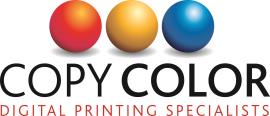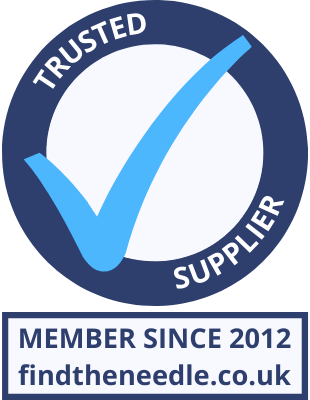 Add My Company
Add My Company
Sign In

Top Tips for Exhibitors at the Swindon Business Show, Steam Museum 15th May 2014
Copy Color would like to offer some top tips for Exhibitors at the Swindon Business Show coming up on the 15th May 2014 at Steam Museum.
1. Define your key objectives
Consider the competition at your event and identify what aspects of your products and services are unique. Decide what you would like to achieve from your exhibition.
•Build brand awareness?
•Promote / demonstrate a specific product or service?
•Take new orders on the day?
•Gather leads and network to support future sales and marketing?
Deciding on your objectives is a vital part of the briefing process and will facilitate production of your exhibition stand.
2. The honey pot
Whether you have a portable stand or a high specification bespoke stand design there is one vital question on everyone’s lips.
How do you get your exhibition stand to communicate who you are, what you do, in the time it takes someone to glance at your stand?
Consider inner city billboards that you may drive past at speed… The successful ones are those that get their message over quickly and are often memorable. The key is in the graphics.
Intelligent use of graphics can communicate a powerful message in a single glance. Think of your exhibition stand in the same way. To ensure your graphics are effective here are some pointers:
•Focus on the benefits of your products or services
•Keep text to a minimum. Your stand should take on the principles of a billboard rather than a corporate brochure
•Create a focal point on your stand and ensure sure everything revolves around your overall message / brand concept
•Your name and your positioning statement should be highly prominent in the design. Remember, if you’re a new company, you have to create a lasting impression, and if you’re an established company of course it is paramount to maintain and build upon your success
3. What are the functional aspects of your exhibition stand?
Will your prospects require seating so you can discuss benefits of your services or products?
•Do you need shelving for product displays or lockable storage?
•What kind of traffic flow do you need through your booth?
4. Are there any other requirements to enhance the visitor experience?
•Do you require plasma screens with animation illustrate your products and services?
•Do you require any specific lighting or audio requirements?
•In respect of overall stand design, does your corporate brand lend itself to the use of curves, sharp/crisp lines, or specific colours?
5. Logistics
•If you have a re-useable stand, make sure the transport cases are durable, as well as replaceable
•Be aware of the size and weight limitations of your shippers, as well as the exhibition locations for the trade shows you are attending
•For portable stands; ensure you have the right tools to assemble your stand, as well as the muscle required to do it
•Don’t forget to secure Public Liability Insurance for any exhibition or trade show that you attend should anything go wrong
6. Staff preparation
•The preparation and suitability of your company representatives should not be underestimated
•Staff should be people orientated
•Be knowledgeable about your company and relevant products and services
•Be enthusiastic and confident
•Be good listeners
•Look and act professionally at all times
They should be informed of the following before attending the exhibition:
•Your objectives
•Your target audience
•Your message to the target audience
•Your products and services (talk about real life stories or case studies)
•The key benefits of your products and services vs the competition
7. Promote your exhibition well before the event
You may be at the stage where you have spent time and money on the details of your exhibition stand for it to convey the best possible message to your target audience. Now you need to create interest in your investment through promotion in the lead up to the event.
•Ensure your company is well represented on the official exhibition website and the event manual or better still create a micro web site to support your event
•Create and send a newsletter to your prospect database, letting them now you will be exhibiting at the event (with stand number)
•Spread the word at other industry events prior to the exhibition
•Advertise in industry magazines
•And of course don’t forget to post on Twitter and Facebook accordingly!
8. Company Literature
•It is thought about 90% of all literature collected by people at exhibitions or trade shows never makes it back to their office.
•Design material that is simple and gets your message across effectively
•Determine how many brochures/give away items will be required. It all depends on how many people you expect to see. Event organisers can often project how many people they expect to attend the exhibition or trade show.
•For an economical point of view ensure you can also utilise any leftover marketing materials for future events and mail outs.
•Don’t overload visitors with information that they may not want, offer to send it to them after the show either by post or electronically.
•Be innovative; offer them a gift that they can use. For example a branded USB key with your company logo and information already downloaded onto it about your company. This way they can continue to the use the key at the rest of the trade show with your company at the forefront of their minds
9. A survival kit for those who ever forgot something that seemed so trivial…
This survival kit includes all of the incidental things you never remember and always need.
It should include:
•Packing tape
•Scissors
•Band-Aids
•Extra extension cords or double adaptors
•Phone chargers
•Business cards of various staff members
•Marketing material
•Pens
•Paper
•Highlighters
•A stapler and staple remover
•Shipping labels filled out for the return shipment
•Extra lead forms
•Cameras
•Expo manual
•Your diary (for appointment setting)
•Your toothbrush and tooth paste!
This is a basic list, and you may need to add items such as a prize draw box, laptops, USB key etc. Whatever it is that you need to take with you it’s important to remember that making a list will help you be organised and efficient during that ‘last minute’ rush!
10. Asking the right questions at your event
There are four phases in exhibition and trade show sales:
•Engagement
•Qualification
•Presentation
•Closing
Engagement
First, as we mentioned above, engaging the show attendee is not as simple as you might think. Assuming you don’t have a magic show, a live animal promo, or other crowd magnet, the burden of getting people to stop at your booth is on your booth staff. The first rule of engagement is: Don’t ask a question that will allow the attendee to simply give you a one word answer and keep on walking.
Ask them what product they are looking for at the show, whether this show has been as helpful for them as another show, if they are familiar with your company, etc. Be creative. This is a critical step, and the goal is to get them to stop and talk to you.
Qualification
Phase two is the qualifying phase. Don’t want to waste your time on someone who isn’t really interested in your product.
It pays to ask some qualifying questions to thrash out the time wasters. There’s nothing worse than seeing six good prospects walk by while you’re politely listening to someone who you suspect doesn’t even need your product. (Yes, it happens, especially if you have cool giveaways on your stand.)
Take a minute to ask some specific questions like, “Tell me about what you’re looking for at the show.” Or “May I ask with you are happy with your current supplier?”
Presentation
Phase three is show time! Wow your audience with the many benefits of using your products and services. Remember to keep your presentation to about five minutes or less and make your message as memorable as possible. If you’ve done a good job identifying your show goals, product message and competitive advantage, then this phase should be a breeze.
It’s typically the easiest phase for your staff because, if they’re sales reps, it’s basically a condensed version of what they do every day.
Closing
The final phase is probably the most important of all, and the key to successful closing is making sure you and your prospects are in common agreement about the next step.
Ask them how they would like for you to follow up. That puts the ball in their court and forces them to say, “Yes, send me some literature” or “Yes, call me on Monday about a quote.” And yes, you do want to get specific with call back times. The more specific you can get, the more likely they will remember who you are when you call.
So those are the basic steps involved in trade show presentations. Role-play the process with your exhibition staff. Pull in office mates to play the role of the exhibition / trade show attendees and assign them personality types to make it more fun and challenging for your exhibition representatives.
11. Follow up leads
The Lead Sheet
One of the greatest frustrations of any sales team concerns the contact information not being completed correctly. You can develop a lead sheet that includes spaces for all of the specific information your sales team need in order to make a sales call.
These sheets should be small enough to fit in a coat pocket, and typically work best in a notepad form. One critical piece of information to add to the sheet is the priority code (or lead assessment). Come up with a simple rating system to assess how “hot” this lead really is. Make sure your stand representatives understand and use this rating system when they talk with show attendees.
Make sure you have a schedule in place for lead follow-up. This means:
•Getting fulfilment packages out within five days after the end of the show
•Allowing two to five days for lead qualification (if you have that option)
•Allowing no more than two weeks to pass before phone contact is made by your sales reps
•Getting an initial sales report on the likeliness of a sale
•Closing the sale
•Getting the final report of closed sales for the show report
Assign a lead manager to who should be responsible for:
•Writing/editing lead response letters
•Determining the fulfilment package contents
•Making sure the fulfilment packages are sent out in a timely manner – not a month after the show, but a week after the show
•Distributing leads among sales reps
•Developing a lead form to collect exactly the information your company needs
12. Writing Response Letters or emails
Writing a lead response letter is usually a much less painful process than writing letters for direct response mailings or other media. In the case of response letters, you know the people have shown interest in your product or service, and now you just have to make sure you answer all of their questions and give them the desire to act on your offer.
A few quick tips include:
•Keep the letter short and sweet
•Personalise the package / presentation
•Consider the tone of voice to ensure culture fit
•Speak specifically about the success of the show
•Make sure you include an offer in the letter to encourage the reader to act.
•Specifically address any requests made at the exhibition
•Make the closing compelling
•State that a representative will be contacting the person by phone, and provide a range of dates for the contact time.
And that’s it… best of luck and we hope you found this useful
For more information on Top Tips for Exhibitors Swindon Business Show talk to Copy Color Limited
Enquire Now
List your company on FindTheNeedle.

